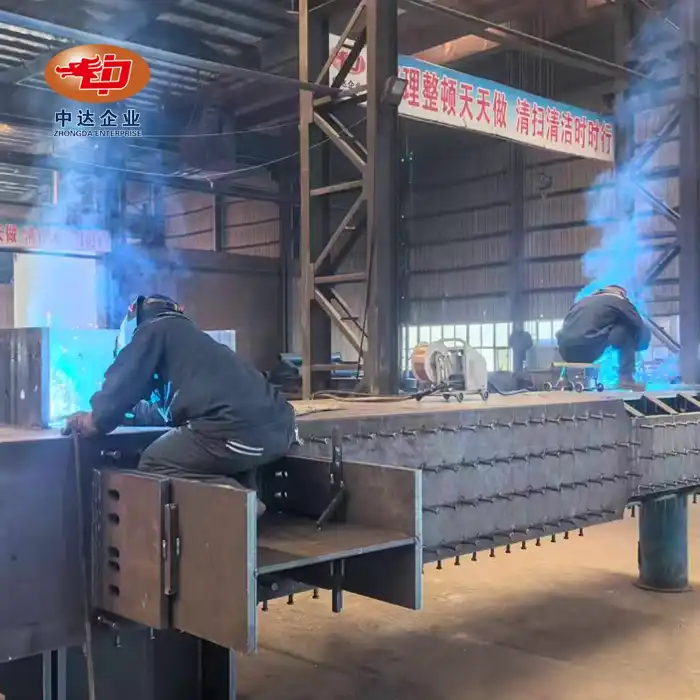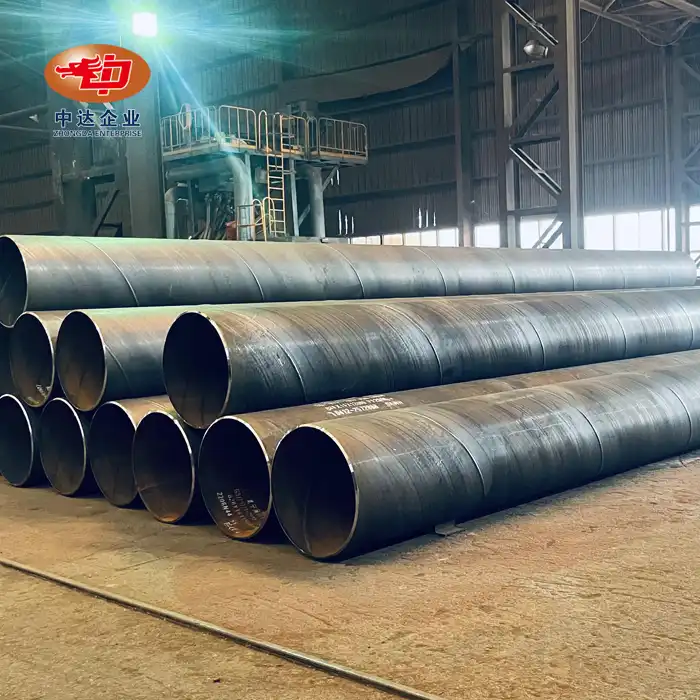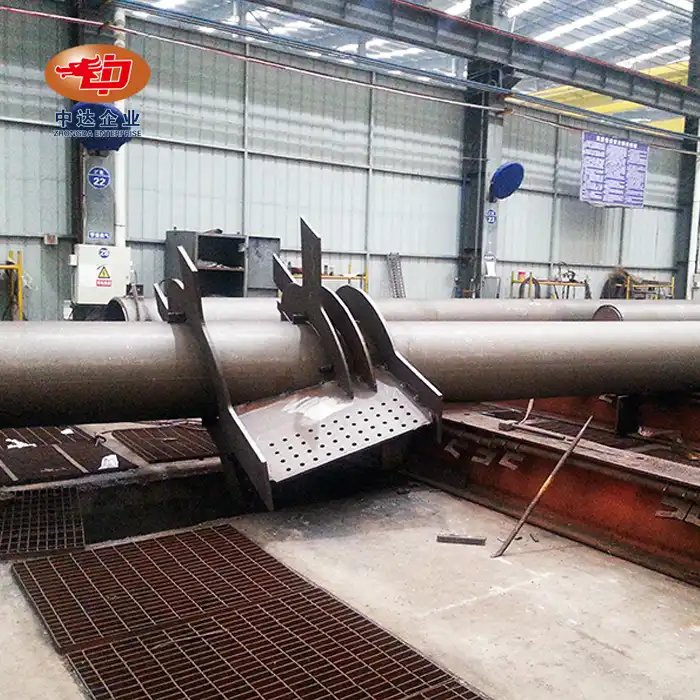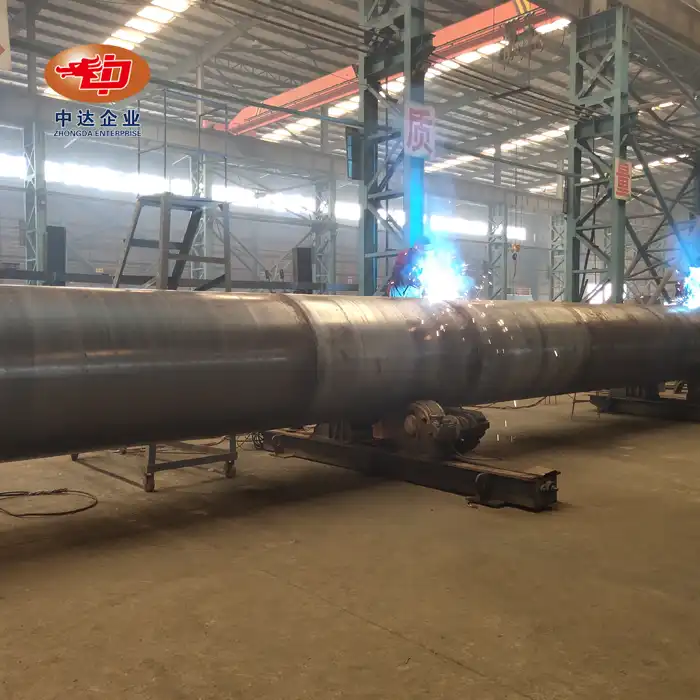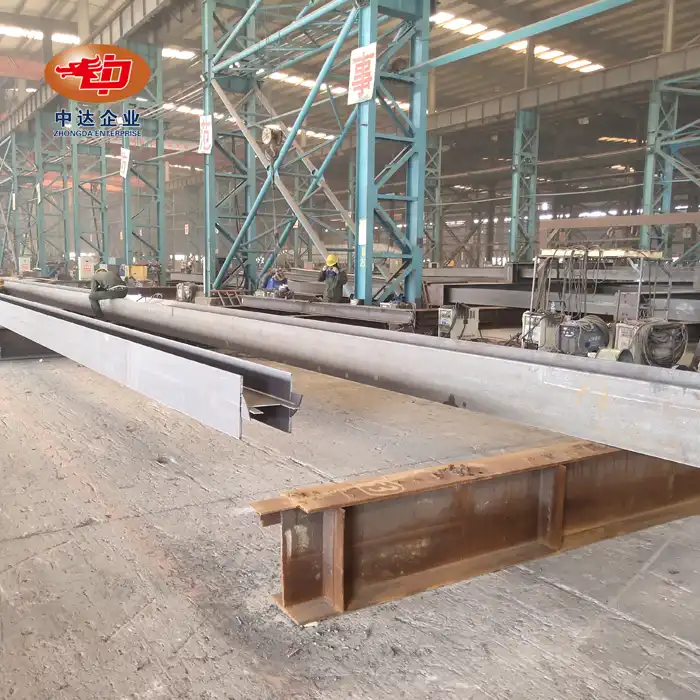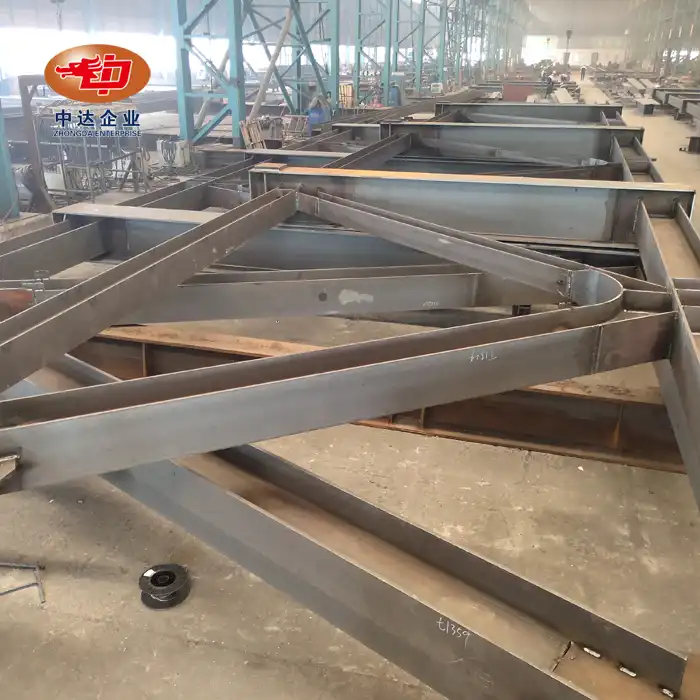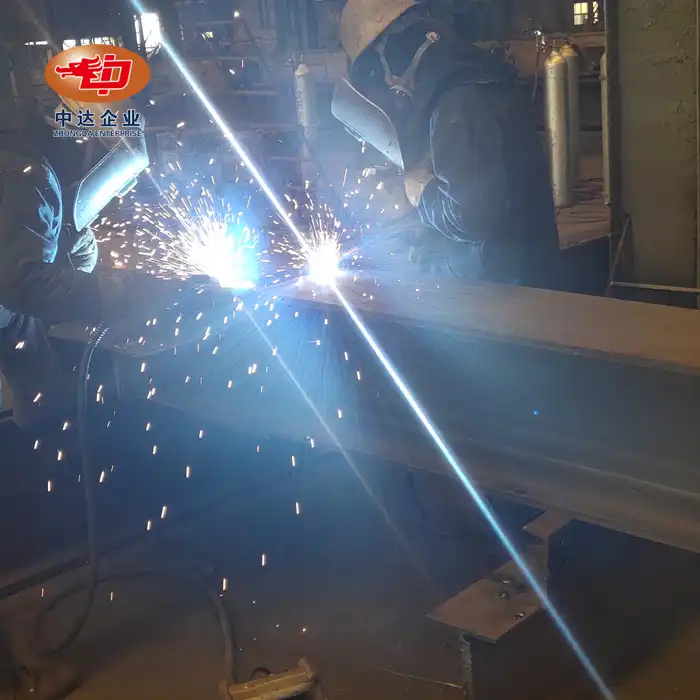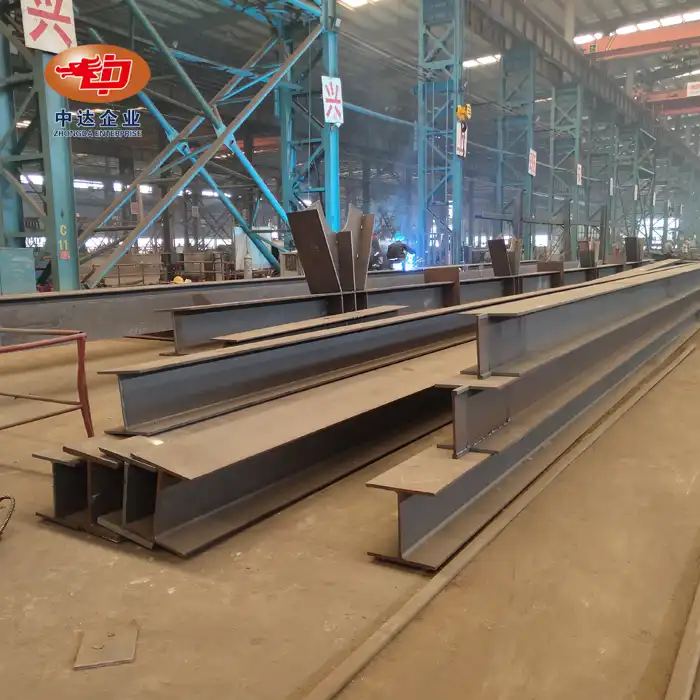Structural Superiority and Design Flexibility
Unparalleled Strength-to-Weight Ratio
Steel’s exceptional strength-to-weight ratio enables the creation of vast, column-free interior spaces, greatly enhancing the viewing experience for spectators. This property allows architects to design stadiums with unobstructed sightlines and expansive spans that accommodate large audiences without compromising structural safety. Zhongda Steel leverages advanced fabrication technologies, such as 100-ton bridge cranes, to precisely manufacture critical components. These capabilities ensure the structural integrity and aesthetic appeal of the stadium while optimizing material usage and reducing overall weight.
Adaptability to Complex Geometries
Steel’s inherent malleability allows architects to bring complex, innovative designs to life - designs that are often impossible or impractical with concrete. From elegant sweeping curves to daring cantilevered sections, steel structure stadiums offer unparalleled design freedom. This versatility facilitates the incorporation of cultural and artistic elements, as well as functional innovations like retractable roofs. Such flexibility differentiates steel stadiums, providing visually stunning and highly functional venues that can adapt to evolving design trends and user needs over time.
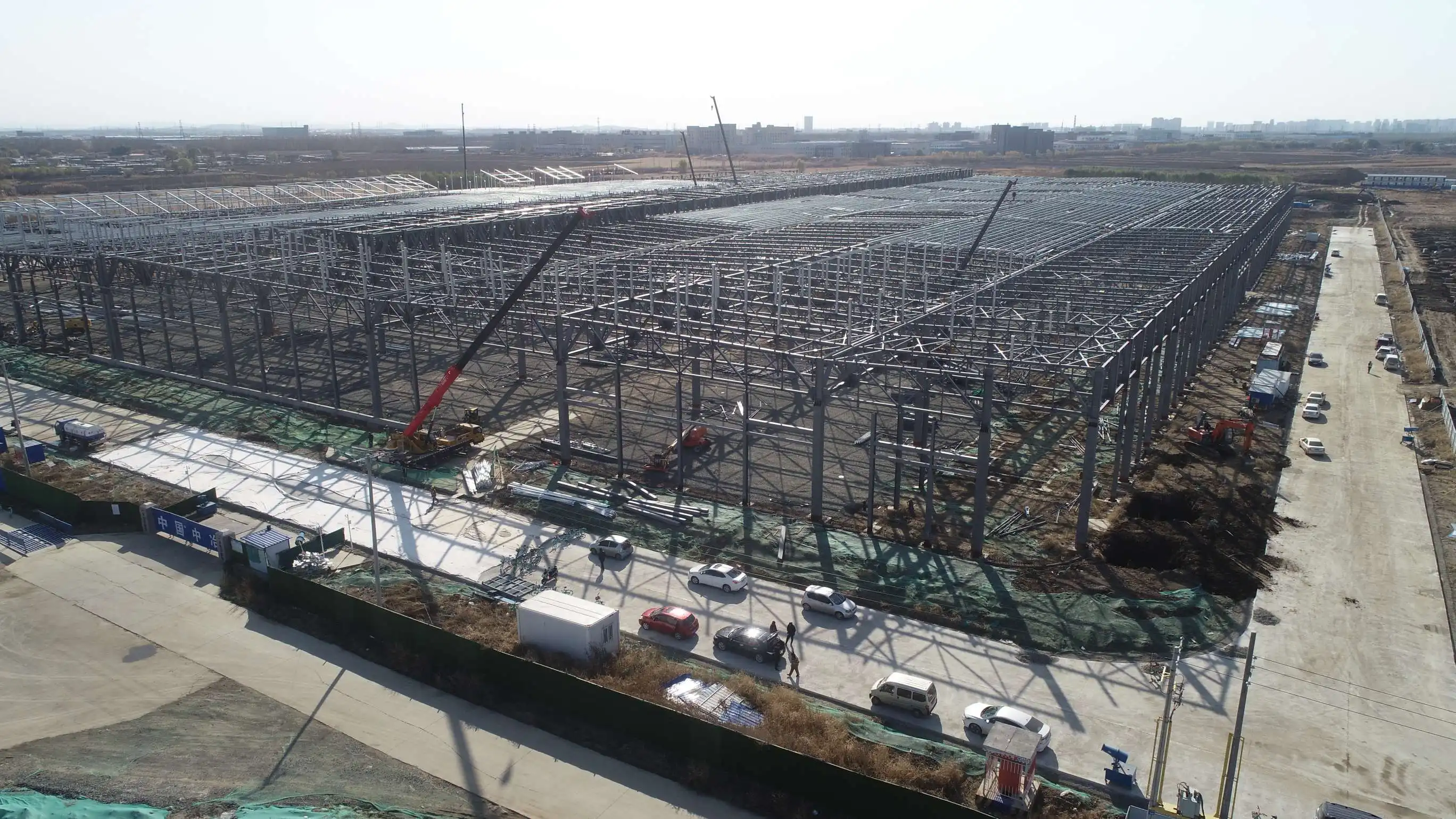
Seismic Performance and Safety
In earthquake-prone areas, steel stadiums provide enhanced safety due to the material’s ductility and energy absorption capabilities. Unlike rigid concrete, steel structures can flex and dissipate seismic forces, reducing damage during tremors. Zhongda Steel’s expertise includes engineering solutions tailored to extreme environments, adhering to seismic standards up to level VIII on the Mercalli scale. This ensures that steel stadiums maintain structural stability and protect occupants even under significant seismic events, making them a reliable choice for high-risk zones.
Efficiency in Construction and Maintenance
Accelerated Project Timelines
One of the most significant advantages of steel stadiums is the speed of construction. Prefabrication of steel components off-site allows for parallel processes, significantly reducing on-site construction time. While concrete stadiums typically require 24-36 months to complete, steel structures can be erected in just 12-18 months, a 40% time reduction crucial for meeting event-driven deadlines. Zhongda Steel's state-of-the-art 120,000 m2 facility and 60,000-ton annual capacity enable rapid production of customized components.
Simplified Maintenance and Upgrades
Steel structure stadiums are inherently easier to maintain and upgrade compared to concrete structures. The use of hot-dip galvanizing in accordance with ISO 1461 standards provides excellent corrosion protection, minimizing long-term maintenance requirements. Additionally, the modular nature of steel construction facilitates future expansions or reconfigurations, allowing venues to adapt to changing needs without extensive demolition or reconstruction.
Weather Resistance and Durability
Modern steel stadiums are engineered to withstand extreme weather conditions. Zhongda Steel's advanced -60°C Weathering Steel Anti-corrosion Technology ensures that structures can endure harsh climates, from arctic cold to tropical heat. This durability, combined with steel's resistance to cracking and spalling, results in longer-lasting structures that maintain their integrity and appearance over time.
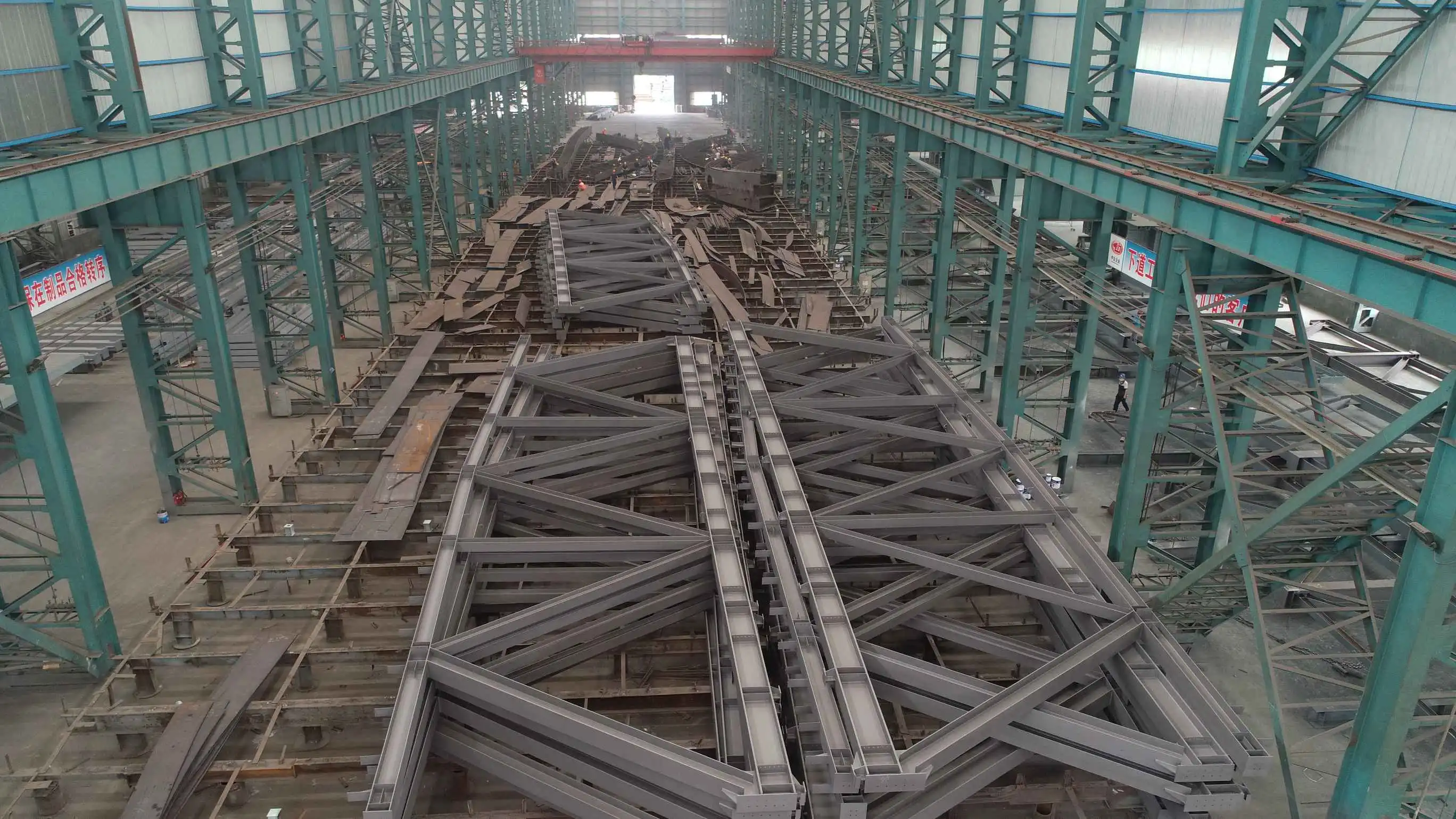
Sustainability and Economic Benefits
Environmental Advantages
Steel's recyclability makes it an environmentally friendly choice for stadium construction. With up to 90% of steel components being recyclable, these structures align well with Green Public Procurement (GPP) initiatives. Furthermore, the lighter weight of steel structures reduces foundation requirements and transportation costs, lowering the overall carbon footprint of the project. Zhongda Steel's ISO 14001 certification underscores its commitment to environmentally responsible manufacturing practices.
Cost-Effectiveness Over Lifespan
While initial costs may be comparable to concrete, steel structure stadiums offer significant long-term economic benefits. The rapid construction timeline reduces financing costs and allows for earlier revenue generation. Moreover, the ease of maintenance and adaptability of steel structures contribute to an estimated 23% lifetime cost savings compared to concrete alternatives. This economic efficiency is particularly attractive for public infrastructure projects where long-term value is a key consideration.
Energy Efficiency and Integration of Sustainable Technologies
Steel stadiums provide excellent opportunities for integrating sustainable technologies. The structural framework can easily accommodate solar panels, wind turbines, and other renewable energy systems. Additionally, the thermal properties of steel can be leveraged to create more energy-efficient buildings through proper insulation and design. Zhongda Steel's expertise in BIM-driven prefabrication allows for optimal integration of these sustainable features from the design phase.
Conclusion
Steel structure stadiums represent the future of sports and entertainment venues, offering unparalleled advantages in design flexibility, construction efficiency, and long-term sustainability. As demonstrated by Zhongda Steel's track record in delivering world-class steel structures, the benefits of choosing steel over concrete for stadium construction are clear. From reduced construction times to enhanced spectator experiences and improved environmental performance, steel stadiums set new standards for modern architectural achievements in the world of sports and beyond.
Contact Us
Ready to elevate your stadium project with cutting-edge steel solutions? Contact Zhongda Steel today and experience the perfect blend of innovation, quality, and efficiency. Our team of experts is ready to bring your vision to life with precision-engineered steel structures that stand the test of time. Email us at Ava@zd-steels.com to start your journey towards building a world-class venue.











